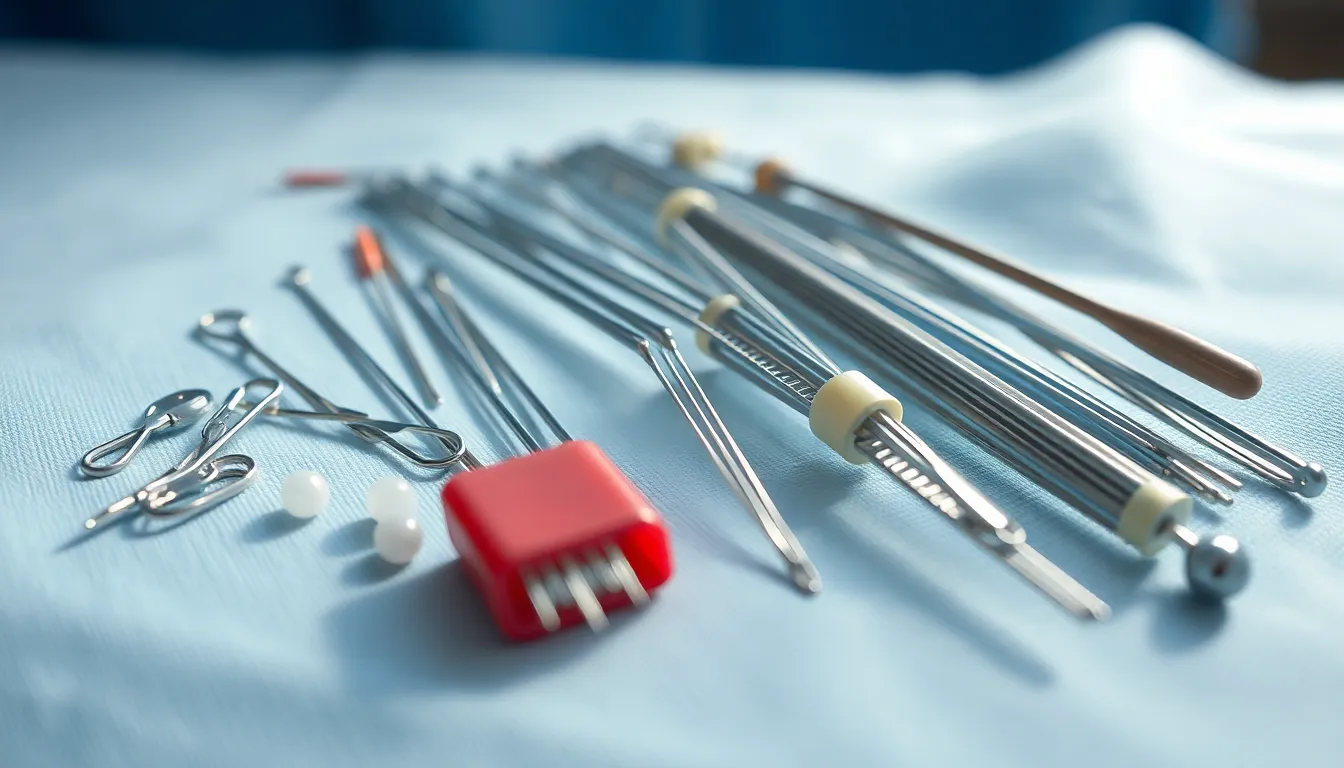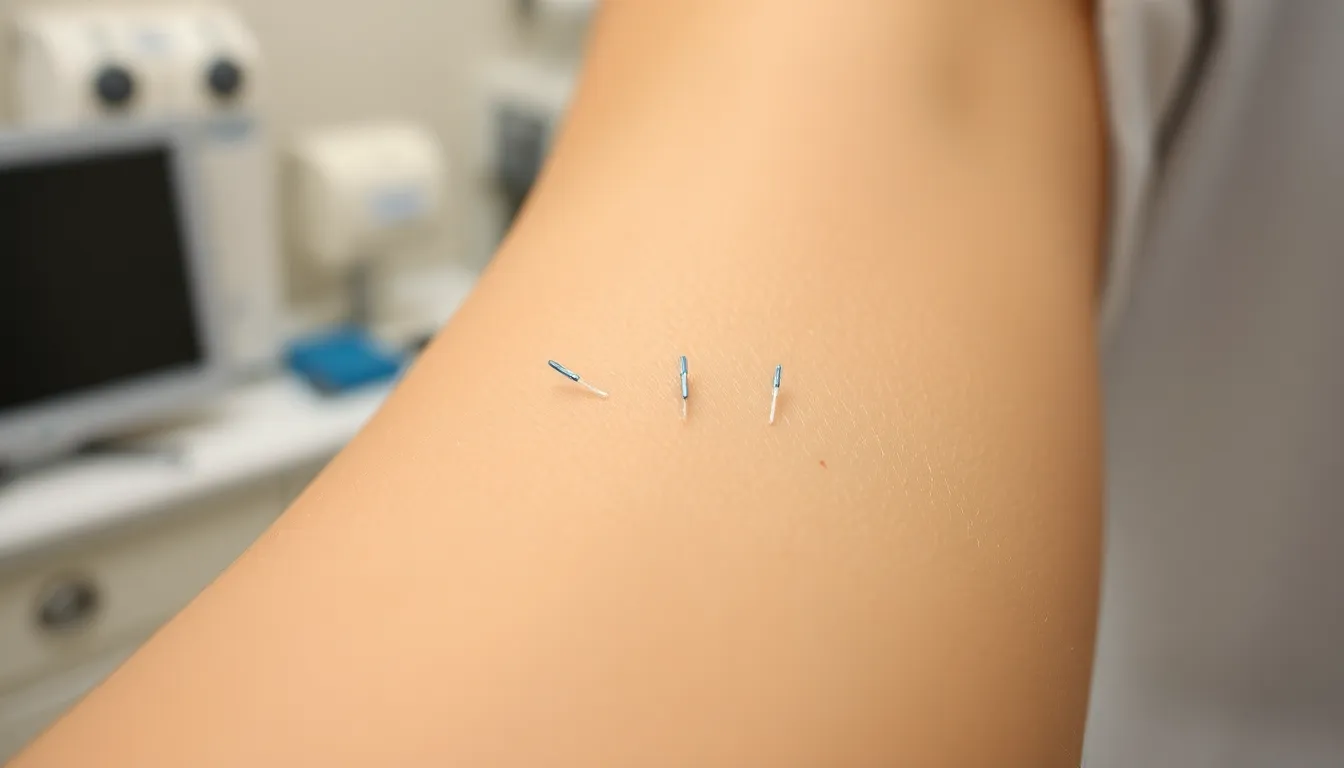Dissolvable stitches, also known as absorbable sutures, play a crucial role in wound healing, providing support while the body repairs itself. Unlike traditional stitches that require removal, these stitches break down naturally over time, eliminating the need for a follow-up visit. Understanding how long it takes for these stitches to dissolve can ease concerns and help individuals manage their recovery effectively.
The timeline for dissolvable stitches varies based on factors like the type of suture material used and the location of the wound. Typically, they can take anywhere from a few days to several weeks to fully dissolve. By knowing what to expect, patients can better monitor their healing process and recognize any potential complications.
Table of Contents
ToggleOverview of Dissolvable Stitches
Dissolvable stitches, also known as absorbable sutures, play a crucial role in the healing process. These stitches eliminate the need for removal, as they gradually break down in the body.
Suture materials vary, influencing the dissolution time. Common materials include polyglycolic acid, polyglactin, and catgut. Each type has a distinct absorption timeline, typically ranging from 3 days to 6 weeks.
Location of the wound also affects how quickly stitches dissolve. For instance, stitches used in areas with high tension may dissolve quicker due to increased stress. In contrast, stitches in low-tension areas may remain intact longer.
Understanding the timeline for dissolvable stitches helps manage recovery effectively. Patients can monitor their healing and recognize potential complications when familiar with these factors.
Types of Dissolvable Stitches

Dissolvable stitches, or absorbable sutures, comprise various materials that serve specific medical needs. Each material has unique properties and absorption rates, impacting their application and effectiveness.
Common Materials Used
- Polyglycolic Acid: This synthetic polymer breaks down within 60 to 90 days. It provides excellent tensile strength, making it ideal for internal suturing.
- Polyglactin: Made from a blend of glycolide and lactide, this material dissolves in approximately 50 to 60 days. It offers good handling properties and is commonly used for soft tissue approximation.
- Catgut: Derived from animal intestines, catgut dissolves within 10 to 30 days, depending on the thickness. While effective, it’s less commonly used today due to the development of synthetic alternatives.
Lifespan of Different Types
| Material | Dissolution Time | Common Uses |
|---|---|---|
| Polyglycolic Acid | 60 to 90 days | Internal suturing |
| Polyglactin | 50 to 60 days | Soft tissue approximation |
| Catgut | 10 to 30 days | Dermatological procedures |
| Polydioxanone | 180 days | Cardiac and orthopedic surgeries |
The lifespan of dissolvable stitches varies by type and application site. Factors such as wound tension and location significantly influence the absorption rate. Understanding these differences helps in managing postoperative care effectively.
Factors Affecting Dissolution Time
Various factors impact the dissolution time of dissolvable stitches, influencing the overall recovery process. Understanding these factors aids in anticipating healing expectations.
Individual Healing Factors
Individual healing rates play a significant role in the absorption of dissolvable stitches. Age affects recovery, with younger individuals typically healing faster than older adults. Health conditions, such as diabetes or compromised immune systems, can hinder healing, extending the dissolution period. Additionally, the patient’s overall nutrition influences wound healing; a well-balanced diet supports faster tissue regeneration. Lastly, the extent of the wound and the surgical technique employed can impact how quickly stitches dissolve, with larger or more complex wounds requiring longer healing times.
Environmental Conditions
Environmental conditions also influence the dissolution time of absorbable sutures. Sterility is crucial; contaminated environments can lead to infections that slow down the healing process and prolong dissolution. Humidity and temperature levels in the treatment area can affect the material’s breakdown rate, with higher temperatures potentially accelerating absorption. Additionally, activity level post-surgery plays a key role. Increased tension on the stitches from excessive movement or strain can cause premature failure of the sutures, impacting healing and absorption duration.
Post-Operative Care for Dissolvable Stitches
Post-operative care for dissolvable stitches is crucial for ensuring optimal healing. Proper maintenance of the stitch area significantly reduces the risk of complications.
Keeping the Area Clean
Keeping the area clean promotes effective healing. Patients should gently cleanse the site with mild soap and water daily. Patting the area dry with a clean towel helps prevent irritation. Avoiding ointments or creams unless prescribed is essential, as these can create a moist environment that may interfere with the stitch absorption process. Monitoring for signs of infection, such as increased redness, swelling, or discharge, is vital in ensuring successful recovery.
Recognizing Complications
Recognizing complications early aids in preventing further issues. Patients should be aware of symptoms that may indicate problems, including persistent pain, abnormal swelling, fever, or unusual discharge. If any of these symptoms arise, seeking medical advice promptly is important to assess the situation. Additionally, notifying a healthcare provider of any changes or concerns assists in addressing potential complications effectively.
Dissolvable stitches play a crucial role in wound healing by eliminating the need for removal. Their absorption time varies widely based on material and wound location. Understanding the different types of dissolvable stitches helps patients set realistic expectations for their recovery.
Factors like individual healing rates and environmental conditions can significantly influence how quickly these stitches dissolve. Proper post-operative care is essential to ensure optimal healing and minimize complications. By staying informed and attentive to their bodies, patients can navigate their recovery journey with confidence and ease.





